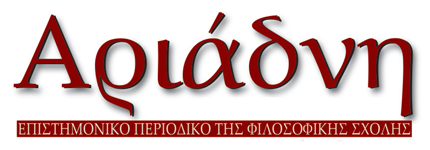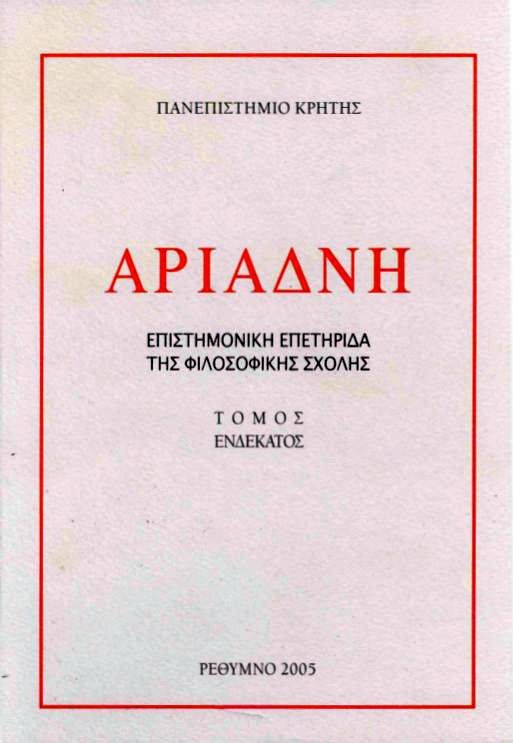Ένας 'πλατωνικός' διάλογος του 12ου αιώνος: Θεοδώρου Προδρόμου Ξενέδημος ή Φωναi
DOI:
https://doi.org/10.26248/ariadne.v11i0.982Περίληψη
Theodoros Prodromos was a prominent intellectual of twelfth-century Byzantium. Among his substantial literary output a charming little dialogue bearing the title Xenedemos is to be found. The text tells us the story of the encounter between Xenedemos, a promising young student of philosophy, and Theokles, the leading philosopher of his time. Ιn the course of the discussion Theokles 'deconstructs' the definitions of the five logical categories offered in Porphyrios' Introduction (Isagoge) and thereby seems to demolish its validity as a textbook for logic. Xenedemos is reasonably reduced to a state of intellectual perplexity (aporia) but is assured by his interlocutor that this is only due to his inexperience in dialectics and that he will eventually succeed in commanding the highest notions of philosophy.
Α number of evidence proves that Prodromos consciously had his own piece moulded out of the Platonic matrix. Formal features, narrative techniques, structural correspondences and ' stage-directions' indicate that the Byzantine piece employs as subtexts dialogues such as the Phaedo, the Parmenides and the Theaetetus. Significantly, Prodromos avoids any slavish imitation of his model but chooses to refashion the tradition of dialogue-writing established by Plato in terms of twelfth-century literary parlour. This choice is in itself interesting and telling of the expectations of Prodromos' intended audience, especially if the Xenedemos was indeed meant as a eulogy in the memory of the author's beloved teacher and a well-known Platonist, namely Michael Italikos.
Λήψεις
Δημοσίευση
Πώς να δημιουργήσετε Αναφορές
Τεύχος
Ενότητα
Άδεια
Οι εργασίες που δημοσιεύονται στο περιοδικό μπορούν να χρησιμοποιηθούν ελεύθερα για μη-εμπορικούς σκοπούς με την προϋπόθεση ότι γίνεται αναφορά στους συγγραφείς και την πρώτη δημοσίευση. Στην περίπτωση που το άρθρο αλλοιωθεί, τροποποιηθεί ή δημιουργηθεί κάτι νέο βασισμένο στο αρχικό, το έργο που θα προκύψει θα μπορεί να διανεμηθεί μόνο με την ίδια ή παρόμοια άδεια (Creative Commons Attribution-NonCommercial-ShareAlike 4.0 International License).


